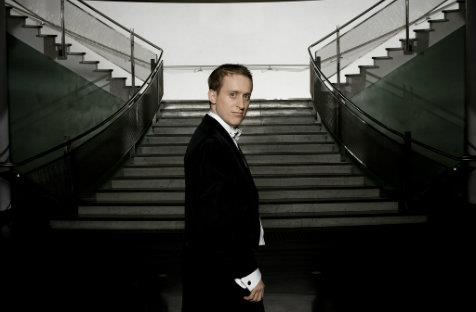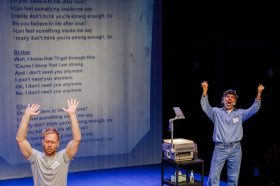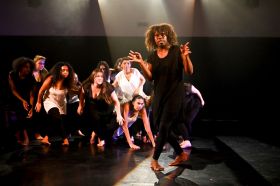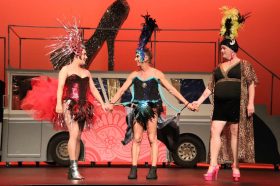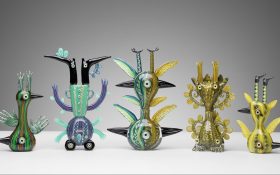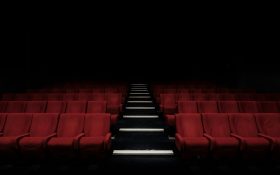Not happy, Jan. (It is one of the great disappointments of a person’s life, I think, if they were too young to see that advertisement. Of course, people who were too young to see it will get to live longer into the future than most of us, so it’s not all bad news for them, I suppose.) I am a connoisseur, of sorts, of programs. I like them thick. I like them, if possible, free. And I like them informative. (And if they can manage to be humorous at the same time, so much the better.) If all of these qualities are met – as they constantly are with the Sydney Symphony, the Australian Chamber Orchestra, the Australia Ensemble (and now, it seems, the Sydney Philharmonia Choir) – then I am a relatively happy man, Jan. A delighted man, Jan. The Sydney Omega Ensemble’s program, however, left me somewhat perturbed.
It’s not that it wasn’t informative (although it could have had a bit more information in it), and it wasn’t that it was particularly thin (although one couldn’t say that it was very thick), rather it was that there was a bit of bait and switch going on. You see, I’d be willing to pay just about anything for a program – which is not to say that I would be jumping for joy about having to do so – but when I pay for said program, and then get, in a free handout at the door to the auditorium, most of the information I’m interested in, I get slightly annoyed. (The free handout, a double-sided page, had all the info about the pieces we were to hear – a carbon copy of what was in the program I spent $5 on; this meant I was only getting a couple of biographies of the key musicians, a list of patrons, and some glossy paper for my money.) Moderately disgruntled, Jan.
But there’s not much else to complain about with this concert. Indeed, it’s the best Sydney Omega Ensemble concert I’ve seen in recent memory. Performed at the City Recital Hall – as opposed to their usual home at the Utzon Room of the Sydney Opera House, a quite small (but wonderfully acoustic) space nestled off the side of the Opera Theatre) – this was a program to savour, with a most welcome variety of instrumentations. (It’s always a possible problem, with small ensembles – especially string quartets and piano trios – in keeping a two hour program consistently fresh; they have to be sure to vary it up. The Sydney Omega Ensemble, with its profusion of wind, has to be especially concerned. Here, there was much ado with strings and piano, and the concert was stronger for it.)
We began with Jean Francaix’s Quartet for winds “Quatour a vents”, which was a playful little number of a Goldilockian length. There was a lovely sense of vitality to it, most likely aided by all the players remaining on their feet for the duration. Louis Spohr’s Septet for Flute, Clarinet, Horn, Bassoon, Violin, Cello and Piano in A minor, Op. 147 came next, and what the Francois quartet had in vitality, the Spohr had in inertia. There was a careful attention to the overarch of each of the four movements, and the tempo was never allowed to be lazily indulged.
The interval followed – the regulation 20 minutes or so – and Richard Strauss’ Capriccio, Op. 85 was next to be presented. (The Capriccio is like a miniature Noah’s Ark of a piece, comprising two violins, two violas, and two cellos.) One had a sense of turmoil during the listening of this, as if there was many a thing yet to be worked out, but, by Jove, it was going to be. Also curious – and, to be honest, somewhat distracting – was the light that fell in the middle of the performance. (Or rather, the light merely slipped in its hinges, such that the circle of light it had been radiating onto the stage suddenly covered the middle of the stalls in a halo of sorts; one or two audience members may have thought the end was coming and the Pearly Gates were about to open. After the piece ended, the light, visibly askew way-up-high in the ceiling behind its metal cage, was dimmed off.)
Shostakovich’s Quintet for piano and strings in G minor, Op. 57 was the last piece on the program. Last heard in Sydney, by this critic at least, with the Australian String Quartet last year, this particular performance didn’t live up to the utmost virtuosity displayed in the ASQ’s go at it. (The ASQ, from memory, went at one of the movements so fast and with such passion that one half-expected the violins to disintegrate under the pressure.) But, listening to the Sydney Omega Ensemble play it, it was hard to remember what the Australian String Quartet had done, and this is the sign of a good interpretation; if it creates its own rules, as it were, if it is self-sufficient, then one knows that there’s a decent level of musicianship going on. The concert as a whole never completely soared, but each piece was consistently very good, and that is quite the rare occasion for any orchestra or ensemble.
Rating: 4 stars out of 5
Tedeschi and Omega
Sydney Omega Ensemble
Simon Tedeschi – Piano
Huy-Nguyen Bui – Violin
Airena Nakamura – Violin
Tobias Breider – Viola
Ewan Foster – Viola
Teije Hylkema – Cello
Timothy Nankervis – Cello
Lisa Osmialowksi – Flute
David Papp – Oboe
David Rowden – Clarinet
Andrew Barnes – Bassoon
Michael Dixon – Horn
Jean Francaix – Quartet for Winds “Quatuor a vents”
Louis Spohr – Septet for Flute, Clarinet, Horn, Bassoon, Violin, Cello and Piano in A minor, Op. 147
Richard Strauss – Capriccio, Op. 85
Dmitri Shostakovich – Quintet for Piano and Strings in G minor, Op. 57
City Recital Hall, Sydney
1 June
